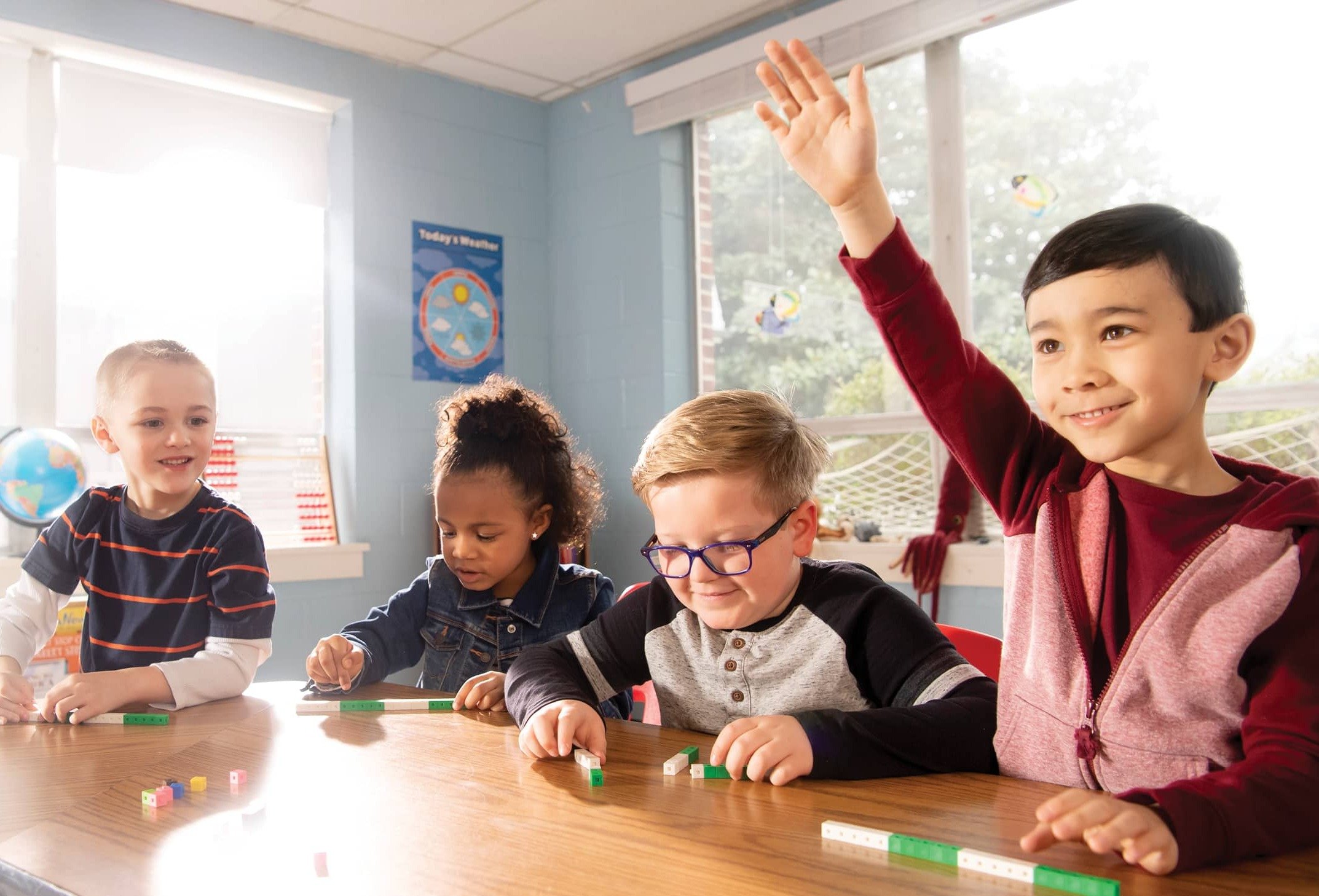

In a comprehensive review of mathematics education research, the National Research Council (2001) concluded “the evidence indicates, in short, that manipulatives can provide valuable support for student learning when teachers interact over time with the students to help them build links between the object, the symbol, and the mathematical idea both represent.”
Strategically S caffolded L earning
To develop the conceptual understanding needed for future success, students need access to a wide array of tools that help them grasp , inte grate , and internalize mathematical concepts. Multiple representations of concepts , when blended into a deliberate sequence—like the concrete - pictorial - symbolic (CPS) progression recommended by the research —are an effective way to lead students to a richer understanding of abstract concepts (Dinsmoor 2022; Hand2Mind n.d.) . The CPS approach is a critical instructional design element of Eureka Math 2 that facilitates deep learning and works best when strong attention is directed at developing student understanding in the concrete and pictorial stages. Here is an example of a concrete- pictorial -symbolic progression in Eureka Math 2 :



Purposeful exploration of math concepts using tangible, hands-on objects like pattern blocks, tiles, and cubes is a vital first step to building conceptual understanding. As students become more comfortable with the concepts and skills being taught, they transition toward visualizing and drawing the concept using pictures. Then, in a continued and intentional progression that occurs within and across modules and levels, students demonstrate their understanding of the concept using the symbolic notation of numerals and symbols.
"Mathematically proficient students consider the available tools when solving a mathematical problem…Proficient students are sufficiently familiar with tools appropriate for their grade or course to make sound decisions about when each of these tools might be helpful, recognizing both the insight to be gained and their limitations.”
(Illustrative Mathematics 2014)
Eureka Math 2 is unique because it intentionally builds bridges between the CPS stages through modeling and guided practice. Students feel empowered to use more abstract representations of concepts because they understand how the mathematical model is connected to the concept and how the concrete, pictorial, and symbolic representations are connected to one another. The curriculum also overlaps the stages to help students build familiarity with the next stage in the progression, even when they are primarily focused on an earlier one. Finally, the CPS instructional approach in Eureka Math 2 offers explicit scaffolding opportunities, enabling teachers to effectively move students back to earlier stages as needed so students can successfully access more advanced learning.
T his exposure to various mathematical tools , along with intentional guidance and scaffolding , ultimately develop s students’ capacity to “ U se appropriate tools strategically,” one of the mathematical habits of mind . In a Eureka Math 2 classroom, students gain an understanding of why and how manipulatives and other tools aid their problem-solving processes , and students are empowered to select the appropriate tools for their learning and application of mathematical concepts.
A Coherent Progression of Models
Manipulatives can be a part of a coherent set of concrete representations that students can draw on throughout grade levels. These concrete representations help build background knowledge in a way that activates students’ memory and emphasizes how the same math concepts can apply to new, more complex units. Many models used in Grade Levels K–5 evolve along with the growing complexities of mathematics and are representative of similar models in Grade Level 6–Algebra I. For example:
Thoughtfully Developed Tools
Our teacher–writers and mathematicians embedded engaging, hands-on, concrete models into the Eureka Math 2 curriculum. When the right tool to represent the concept didn’t exist, they created it.
In Grade Level 2 Module 1, students are introduced to meter sticks and measuring tapes as tools to explore metric measurement and the beginning concepts of place value. The Eureka Math 2 exclusive Double-Sided Meter Sticks and Measuring Tapes are specifically designed to be used as a concrete model throughout Grade Level 2.
Many of our unique manipulatives, such as Story Boards, Block Puzzles, and Bingo Games can be utilized for games and centers throughout the school year.
When you purchase the manipulatives kits for your grade level, you utilize the tools exactly as the expert teacher–writers intended. In addition, h a v i n g th ese vital tools a t the p o i n t o f u s e means teachers can spend less time prepping a n d m o r e t i m e i n t e n t i o n a l l y p l a n n i n g. Take a look inside the manipulatives kits for Level 2 of Eureka Math 2 .
Built-In Support for Educators
Manipulatives kits are available for each grade level of Eureka Math 2 . There are also virtual versions of many (but not all) of the manipulatives that can be displayed to the class. To ease instructional planning and delivery, all the materials needed for instruction can always be found in the Module Overview for each module on the Great Minds ® Digital Platform.

In the Teach book, materials can be found listed at the end of each module.
 2 Module 1 shows what this resource looks like in the Teach book. Some of the key materials in this module are measuring tapes, place value disks, place value cards, craft sticks, and rubber bands." width="728" height="388" />
2 Module 1 shows what this resource looks like in the Teach book. Some of the key materials in this module are measuring tapes, place value disks, place value cards, craft sticks, and rubber bands." width="728" height="388" />
Since teachers are key to helping students use manipulatives successfully, the Eureka Math 2 writers also share insights into the design of certain manipulative activities in the “Why” section of each module to support teacher understanding. You can see an example of this feature below from the Grade Level 2 Module 1 Module Overview.